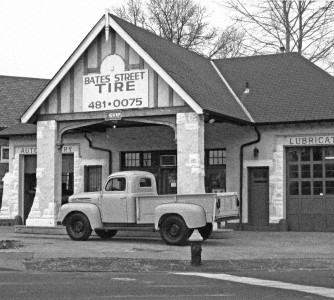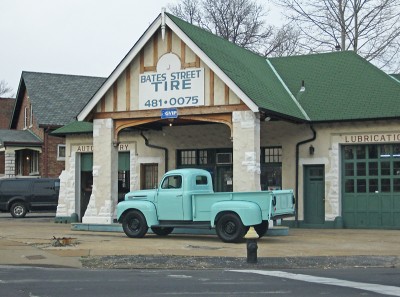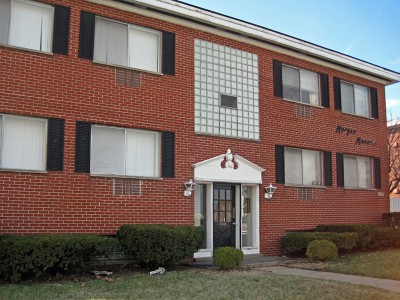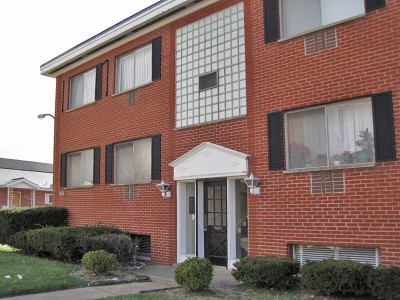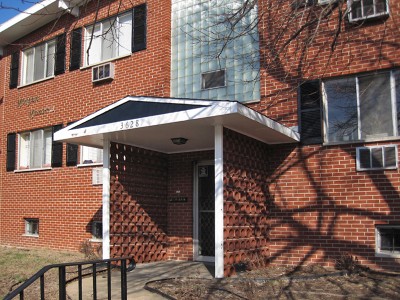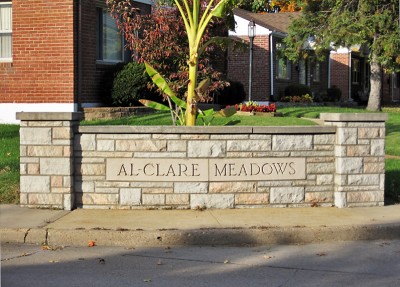
Morgan Ford at Poepping Street
South St. Louis City, MO
Subdivision entrance monuments, like the one shown above, are always interesting to observe. They are often the first thing to go up when a new subdivision is developed, and the design and materials chosen either reflect the aesthetic of the subdivision or wind up at great odds with what resulted. But mainly, entrance monuments are about place-marking, a means of declaring to passers-by (and in the early days of development, potential buyers) that “we are a proud and unique community.”
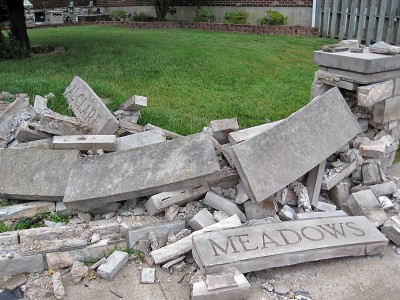
One morning at the end of July, I pass by the entrance to Al-Clare Meadows and see one of the signs down and scattered. I’m assuming it was a car because of the extent of the destruction, and how suddenly it occurred: Tuesday it was standing, Wednesday it was splattered in the neighbor’s yard.
Based on current costs of masonry repair and labor, I naturally assumed this entry marker was eternal toast, that the pieces would be carted off, the homeowners lawn repaired, and Al-Clare would continue unperturbed with a lopsided entry.
I made this assumption because of where it’s located and its age. The small-to-modest size tract homes of Al-Clare Meadows (the name came from combining Alberta and Clarence Dalton, the subdivision developers) are a bit south of the River Des Peres, and a scootch away from the St. Louis City/County line. So it’s in that nebulous part of town that’s not quite city, not quite county; not quite old, not quite new; not really distinct but certainly unoffensive. Honestly, people tend to overlook this unassuming part of town unless they – or someone they know – live there.
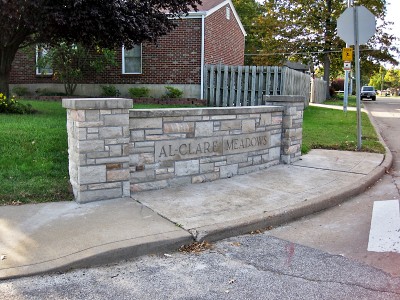
It took a couple of months of waiting, but there it is, rebuilt!
(SIDE BAR How odd that the pile of rubble remained undisturbed that entire time… I assumed outsiders would just help themselves to some masonry because that’s what tends to happen in some of the older city neighborhoods. Hell, they even purposely yank down walls to get at it… but that’s another story, right?)
When considering everything that had to transpire for that marker to be rebuilt (patience, funding, protection, masonry craft, etc.), my heart swelled with gratitude for this neighborhood’s pride of place that made it possible. And I was embarrassed by my rash assumptions about the neighborhood and the fate of the sign because it was snobbism, plain and simple. I am humbled by what I don’t know, and I’m thankful that – within the big picture – something so comparatively small really did matter to the people it represented.
So every time City Hall pulls another WTF? out of their trick bag, I think about the resurrected Al-Clare entry monument, because it is things like this that truly reflect and represent what makes St. Louis City so special – the people and their love of place.

